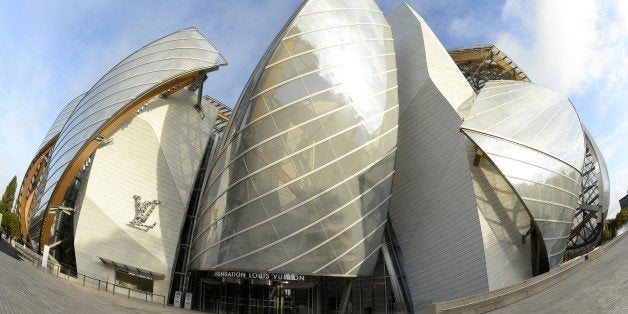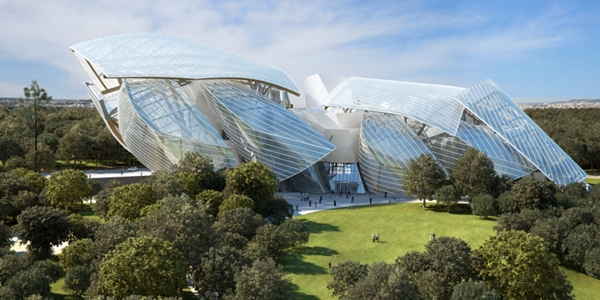
The Fondation Louis Vuitton, a new museum in the Bois de Boulogne, is an impeccable creation that has taken years to materialize. It is the lovechild of Bernard Arnault, president of the luxury conglomerate LVMH and the wealthiest man in France. (And fifth wealthiest in the world.)
Deeply impressed by Frank Gehry's Guggenheim Museum in Bilbao, Spain, Arnault met with the American "starchitect" in 2002 and began a long process of consultation to design a museum to house his personal art collection. Arnault had his eye on the Jardin d'Acclimatation in the Bois de Boulogne, the children's park on the edge of the city. Bertrand Delanoe, mayor of Paris in 2005, was enthralled with the idea, and a special Vuitton Foundation was created the following year.
But plans to build in the park were thwarted when a court ruled against it, following an outcry from local residents. The case was then taken up by the French Parliament, which passed a special law to allow its construction -- an unprecedented action. (Interestingly, François Pinault, a corporate rival of Arnault, wanted to build a museum for his own collection on the tiny Ile de Seguin at the western end of Paris. But he ran into so much opposition and red tape that he abandoned the plan and built his museum in Venice.)
After formal approval, there were technical problems to solve. Gehry's design called for huge, curved expanses of glass: "We didn't have the technology years ago to build it," he says. But the 3,600 glass pieces were finally produced in Italy and construction began in 2012.
Now completed, at a cost of $143 million, the structure is an amazing tour de force. The glass units are neither roof nor façade: they are simply bulging, overlapping segments supported by an intricate mesh of steel. (Plus a number of heavy wood beams that seem rather out of place.) Visitors can stroll under and around these structures, from level to level, sometimes under a canopy and sometimes in the open air, with a sweeping view of Paris in the distance. Of course, rainy weather will keep everyone inside.
There is a wide, shallow waterfall that runs continuously into the lower level of the building, which is currently embellished with an installation of mirrored pillars. On the main level, one enters a vast white space that contains, somewhat haphazardly, a staircase or two, several elevators, a bookstore, and a restaurant area (called Le Frank) where Gehry has hung 17 huge, artificial white fish from the ceiling -- a complete anomaly, unless you know that he has been fascinated with fish for at least 30 years. (He is now 85 years old.)

There are 11 large galleries, and an enormous 350-seat auditorium that is hung with big color panels by the American artist, Ellsworth Kelly. Arnault plans to hang at least part of his private collection, and is entrusting future programs and activities to a curator, Suzanne Pagé. Ms. Pagé stresses that it is not the purpose of the building to remain "static" but to organize changing activities and exhibitions: musicians, dancers, poetry readings, children's art. One of the first events will be inviting the Minimalist artist Daniel Buren to paint black stripes on the building. One wonders who will be hired to remove them.
Gehry agrees with the casual agenda. "Suzanne has to learn to play the instrument," he says. "It really won't matter very much what they put into the museum; it will be a work in progress."
The Fondation will be turned over to the city of Paris in 50 years. In the meantime, visitors will be charged 14 euros entry fee. Because the museum is a good 20-minute walk from the nearest Métro station (Les Sablons), an electric shuttle will be in service, leaving from the Place Charles de Gaulle every 15 minutes.
The Fondation Louis Vuitton stands as a flagship to the LVMH empire. But will it really function as a museum or simply exist as an architectural curiosity, like the Eiffel Tower? Time will tell.